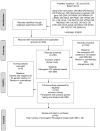Deep brain stimulation for monogenic Parkinson's disease: a systematic review
- PMID: 30659355
- PMCID: PMC7109183
- DOI: 10.1007/s00415-019-09181-8
Deep brain stimulation for monogenic Parkinson's disease: a systematic review
Abstract
Deep brain stimulation (DBS) is an effective treatment for Parkinson's disease (PD) patients with motor fluctuations and dyskinesias. The key DBS efficacy studies were performed in PD patients with unknown genotypes; however, given the estimated monogenic mutation prevalence of approximately 5-10%, most commonly LRRK2, PRKN, PINK1 and SNCA, and risk-increasing genetic factors such as GBA, proper characterization is becoming increasingly relevant. We performed a systematic review of 46 studies that reported DBS effects in 221 genetic PD patients. The results suggest that monogenic PD patients have variable DBS benefit depending on the mutated gene. Outcome appears excellent in patients with the most common LRRK2 mutation, p.G2019S, and good in patients with PRKN mutations but poor in patients with the more rare LRRK2 p.R1441G mutation. The overall benefit of DBS in SNCA, GBA and LRRK2 p.T2031S mutations may be compromised due to rapid progression of cognitive and neuropsychiatric symptoms. In the presence of other mutations, the motor changes in DBS-treated monogenic PD patients appear comparable to those of the general PD population.
Keywords: Deep brain stimulation; Genetic; Monogenic; Parkinson’s disease.
Conflict of interest statement
The authors declare that they have no conflict of interest.
Figures
References
-
- Deuschl G, Schade-Brittinger C, Krack P, et al. A randomized trial of deep-brain stimulation for Parkinson’s disease. N Engl J Med. 2006;355:896–908. - PubMed
-
- Obeso JA, Olanow CW, Rodriguez-Oroz MC, et al. Deep-brain stimulation of the subthalamic nucleus or the pars interna of the globus pallidus in Parkinson’s disease. N Engl J Med. 2001;345:956–963. - PubMed
-
- Antonini A, Moro E, Godeiro C, Reichmann H. Medical and surgical management of advanced Parkinson’s disease. Mov Disord . 2018;33:900–908. - PubMed
-
- Schuepbach WM, Rau J, Knudsen K, et al. Neurostimulation for Parkinson’s disease with early motor complications. N Engl J Med. 2013;368:610–622. - PubMed
Publication types
MeSH terms
LinkOut - more resources
Full Text Sources
Medical
Miscellaneous


